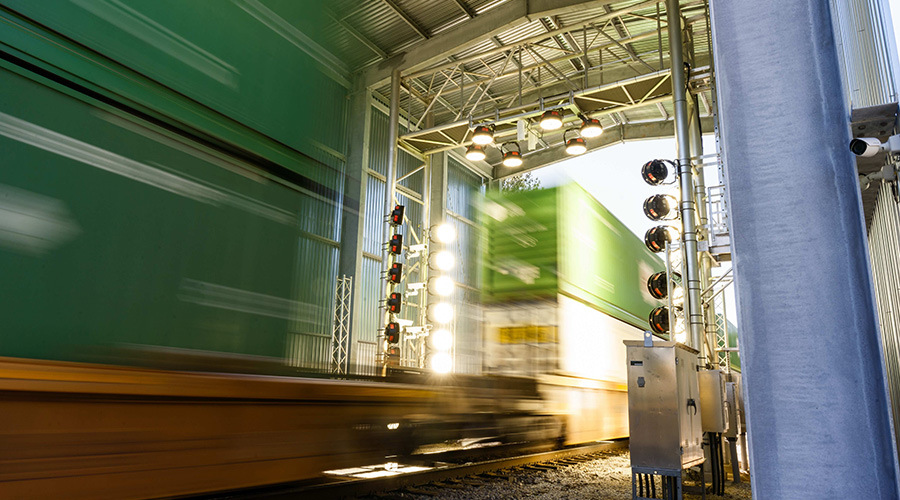UP is high on high-tech cranes for Chicago-area intermodal terminal
10/8/2021
By Jeff Stagl, Managing Editor
With consumer spending on the rise, a high number of containers are pouring into U.S. ports and filling trains headed to major population centers. That means the Class Is need more capacity to handle the volume surge, and more efficiencies to disperse containers at terminals quickly.
Union Pacific Railroad is trying to cover both of those objectives at one of its key Chicago-area intermodal facilities by employing five new electric wide-span cranes that are integrated with artificial intelligence (AI) and automation. Stretching 75 feet tall and 250 feet wide, the cranes are designed to operate both autonomously and semi-autonomously to unload containers from trains or load containers onto trucks.
The high-tech cranes mostly have been assembled and programmed at UP’s Global IV terminal in Joliet, Illinois, and the majority of them recently entered the testing phase. They will enable the Class I to eliminate many of the diesel trucks now used to park containers at the facility.
 Each of the cranes is 75 feet tall and 250 feet wide, and can operate both autonomously and semi-autonomously. Union Pacific Railroad
Each of the cranes is 75 feet tall and 250 feet wide, and can operate both autonomously and semi-autonomously. Union Pacific RailroadThe cranes will span six tracks and perform most functions autonomously, such as locating and lifting containers, due to built-in automation. They can identify a container within one-sixteenth of an inch of its location and move any other containers out of the way, if necessary.
However, the cranes will operate semi-autonomously while loading or unloading containers over a working track or at a truck transfer area as a safety precaution, says Jeff Chapman, UP’s general director of capacity and technology-network planning and operations. They will be remotely monitored and controlled by a supervisor and operator situated in a control room within Global IV’s main building.
The person operating the remote-control system will monitor and/or assist the lowering of a container onto a truck to ensure the process is smooth and safe. UP currently is hiring personnel to staff the cranes and plans to implement a training program later this year.
The AI incorporated into the cranes — namely, algorithms — enables the robotic workhorses to manage multiple priorities and work orders, analyze future lifts, determine the proximity to other container moves and crunch other data.
“Managing work orders will be the highest-priority one,” says Chapman.
 The cranes will be remotely monitored and controlled by a supervisor and operator situated in a control room within Global IV’s main building. Union Pacific Railroad
The cranes will be remotely monitored and controlled by a supervisor and operator situated in a control room within Global IV’s main building. Union Pacific RailroadIn addition to making container-handling operations safer, the cranes offer several benefits. Since they are electric, they are environmentally friendly by eliminating greenhouse-gas emissions and cost efficient by requiring no fuel and deceasing maintenance expenses, says Chapman. In addition, the cranes will help remove redundancies in work processes and reduce hostling requirements.
“We won’t need to move containers around as much,” says Chapman. “The workload will be lowered and smoothed out. There won’t be anymore ‘hurry up and wait.’”
Moreover, the cranes offer more capacity in their given footprint — “about triple the capacity of a wheeled operation,” he estimates.
The cranes will be tested until mid-2022, and then enter revenue service. Testing will be performed in an area set off for the specialized equipment so it won’t impact terminal operations, says Chapman. The area includes enough space to add a sixth crane in the future if warranted.
During the testing phase, UP hopes to develop a learning curve with the cranes — which are slower than traditional models, but operate non-stop — that could pay off in the future. The Class I is evaluating the use of the cranes at other intermodal terminals, depending on the facility’s size, workload, location and other factors.
CSX currently operates three similar cranes featuring AI and automation, and a number of other facilities employ wide-span electric gantry cranes. But UP is using a different model with both AI and automation, says Chapman.

